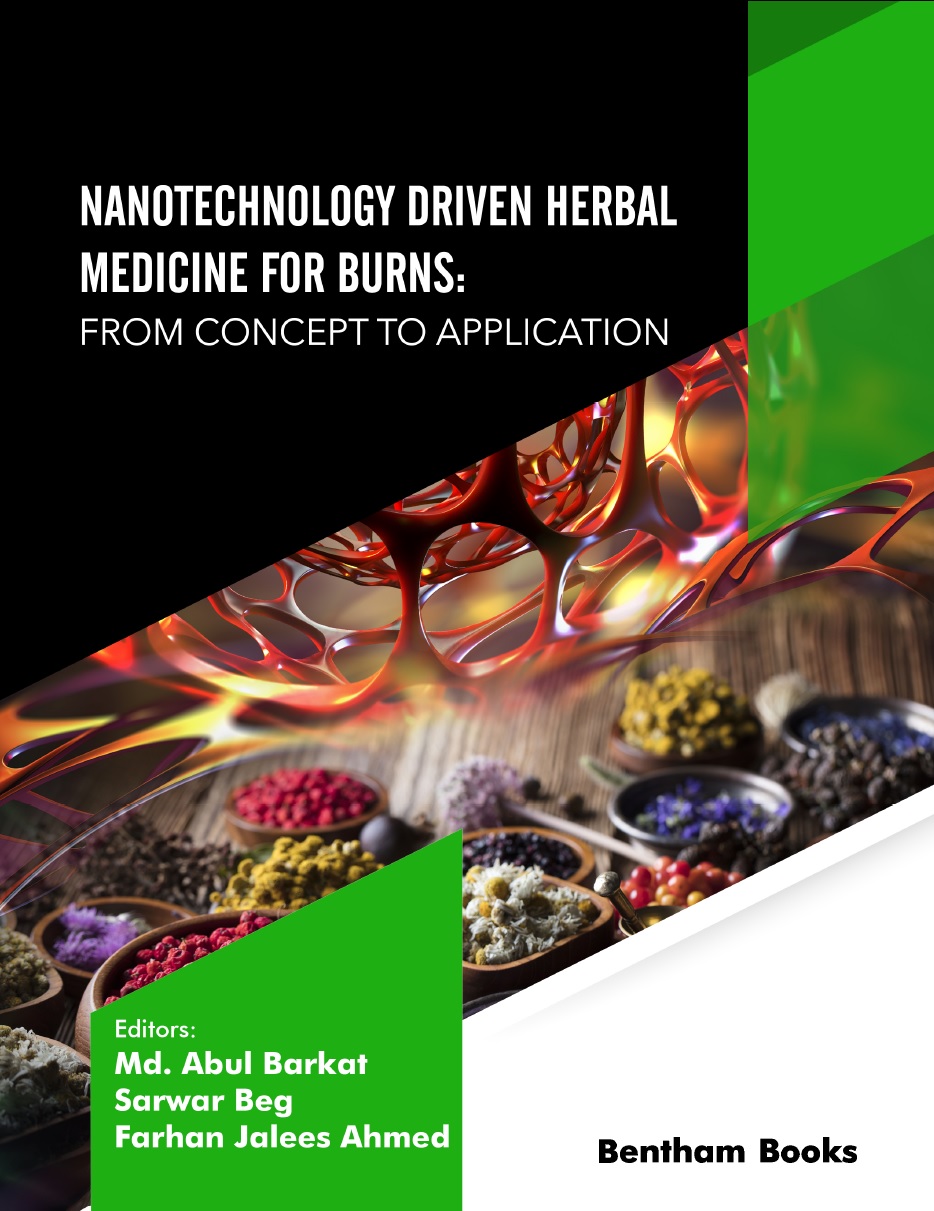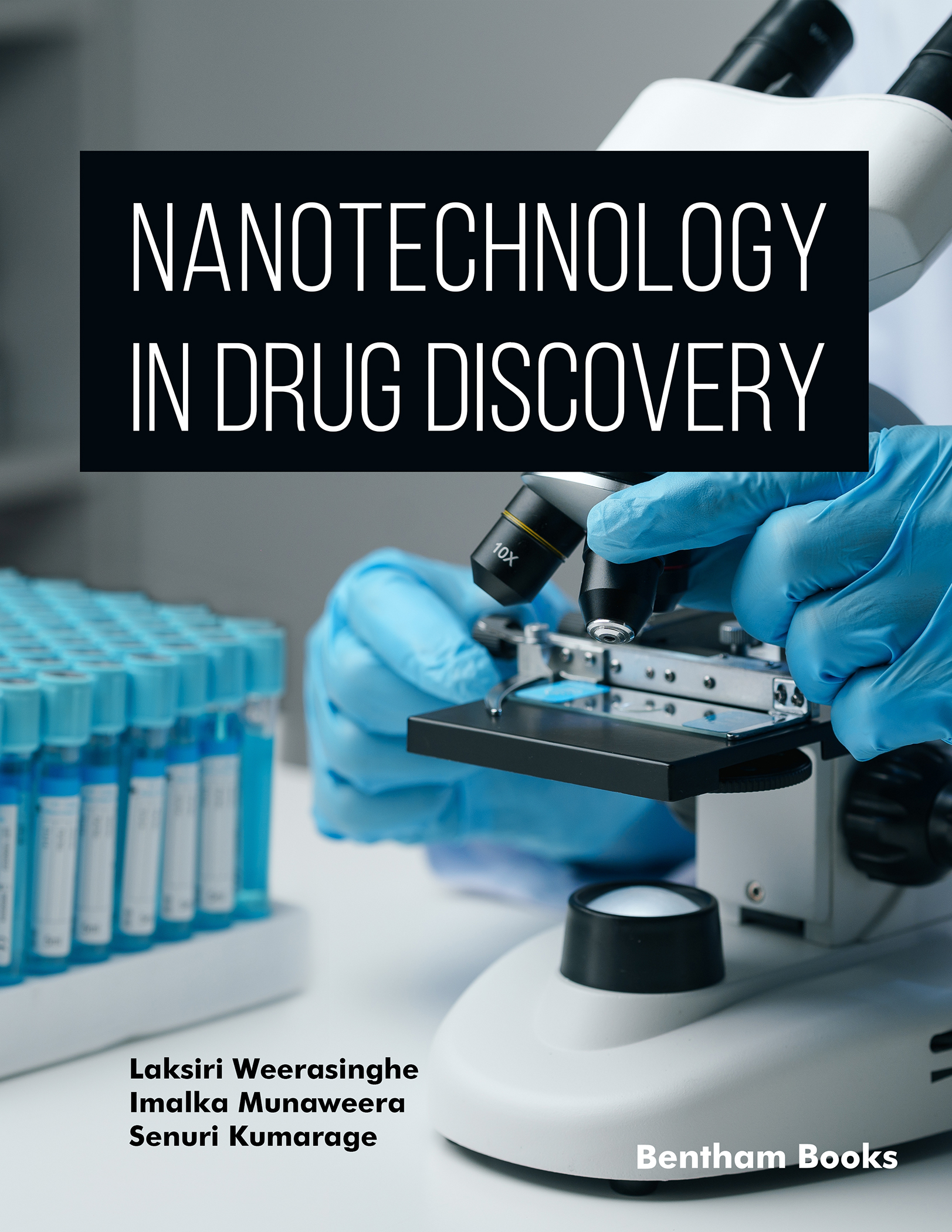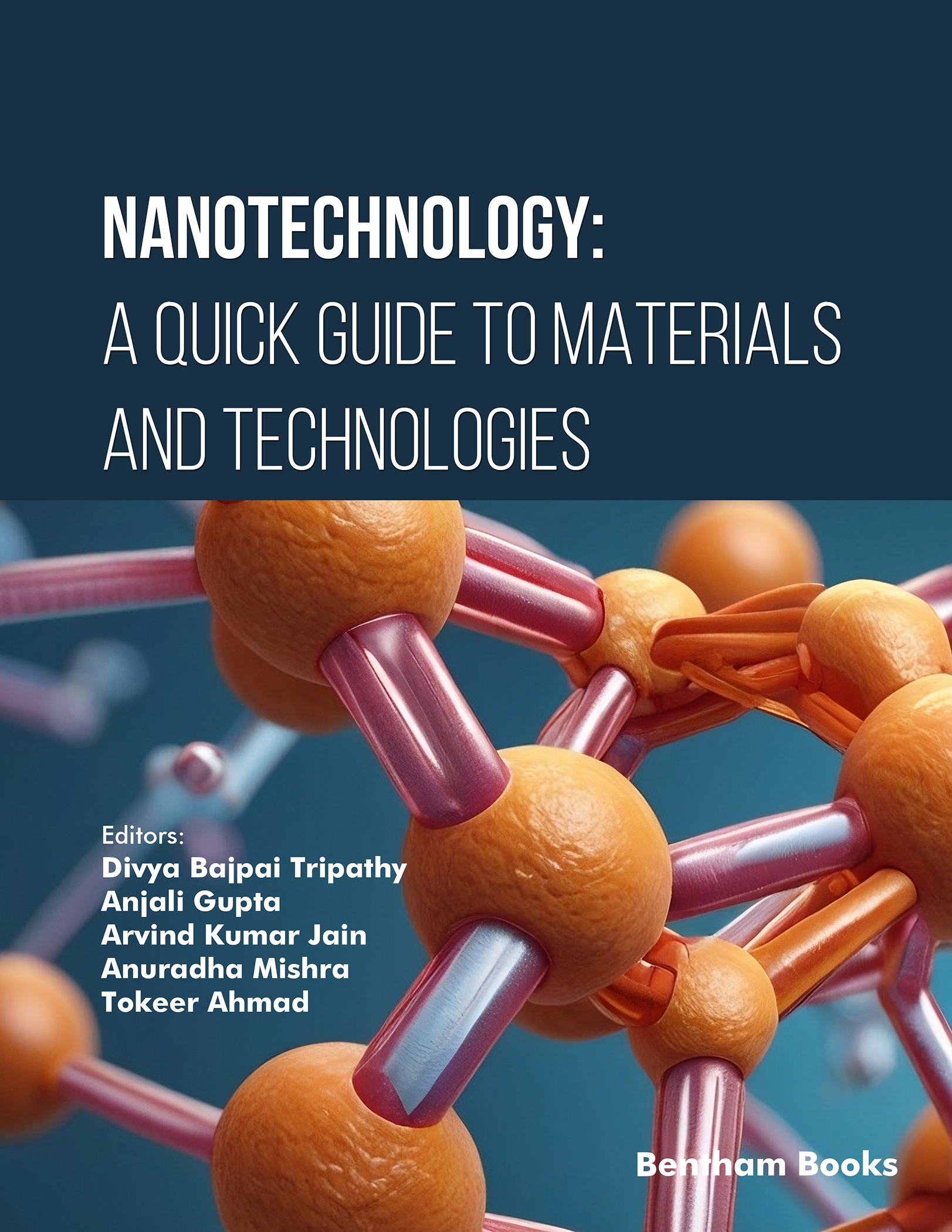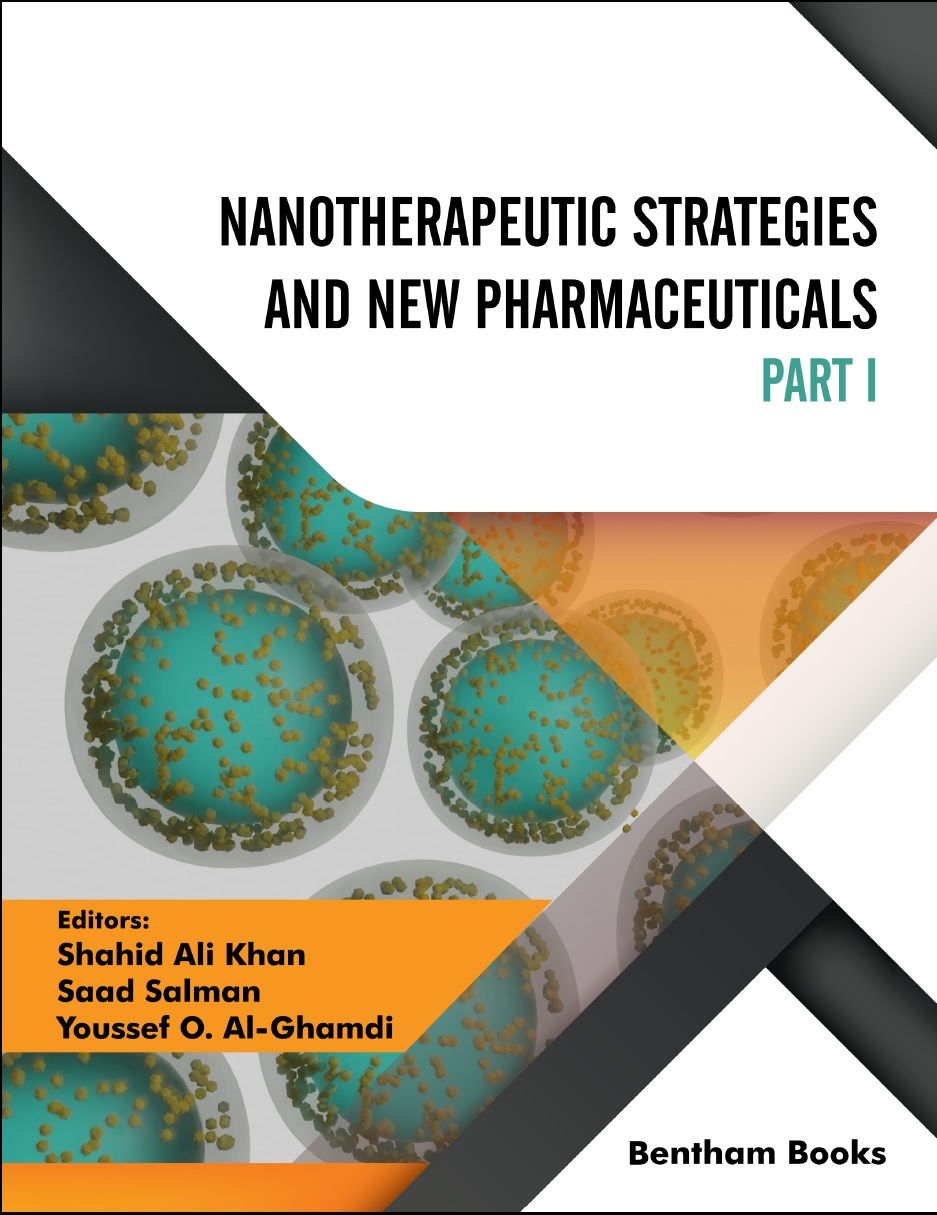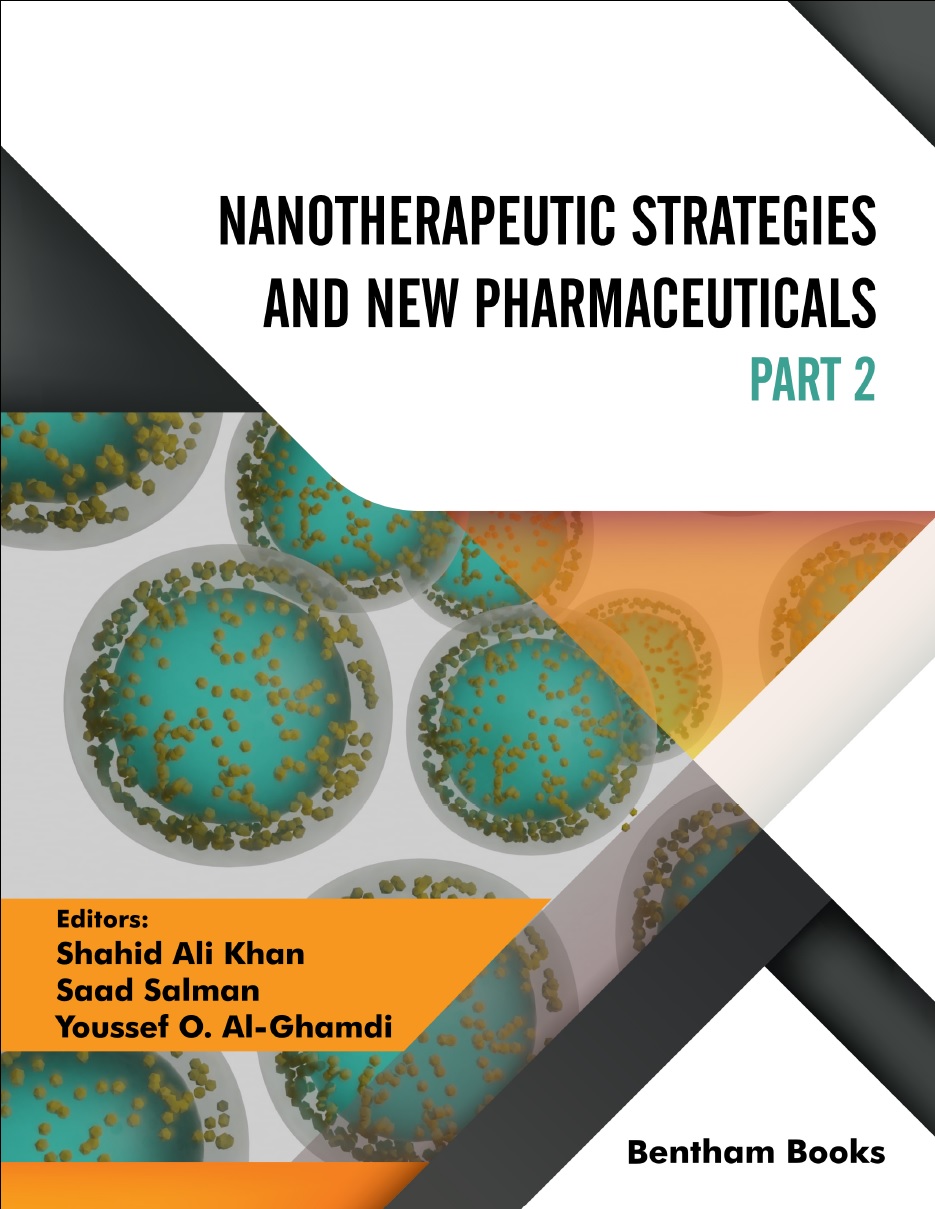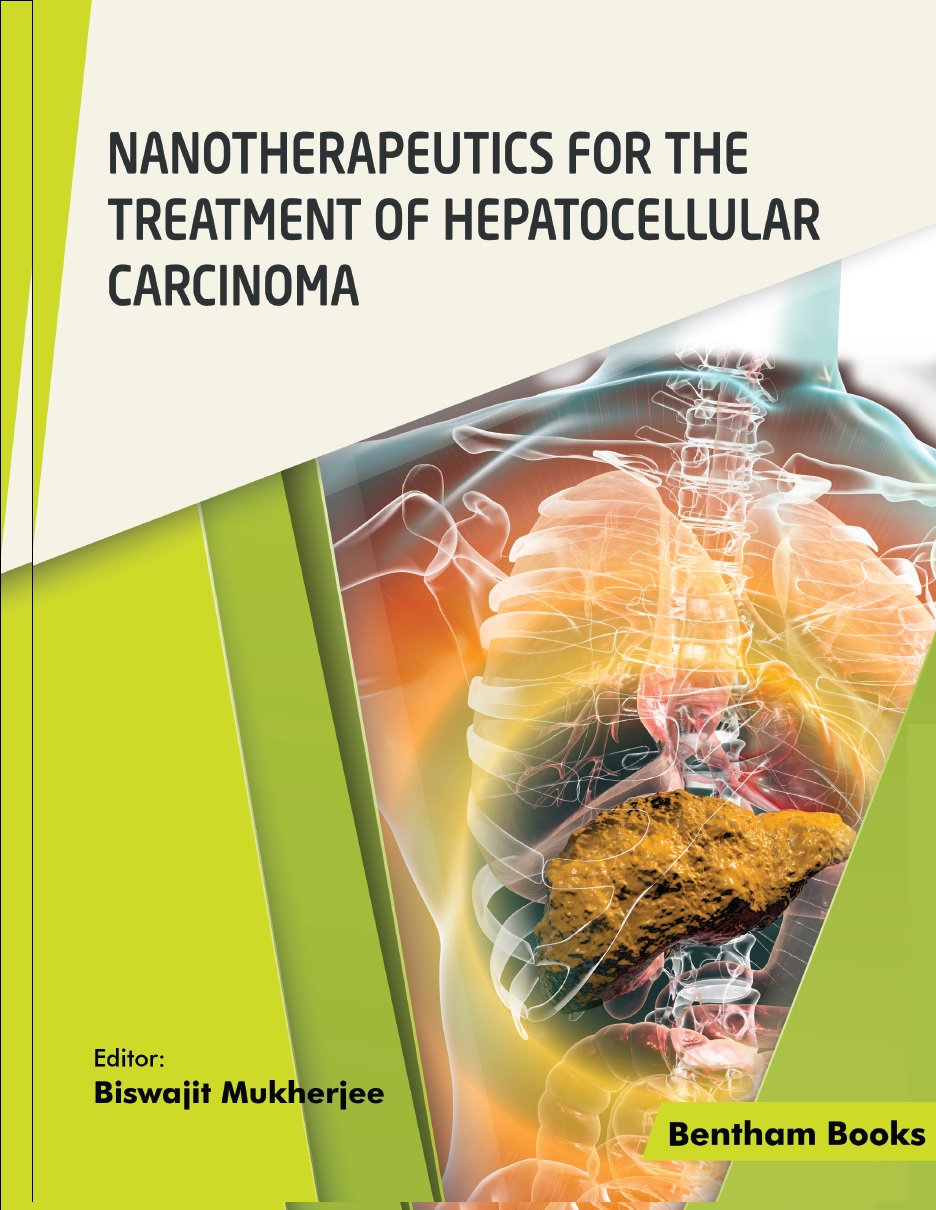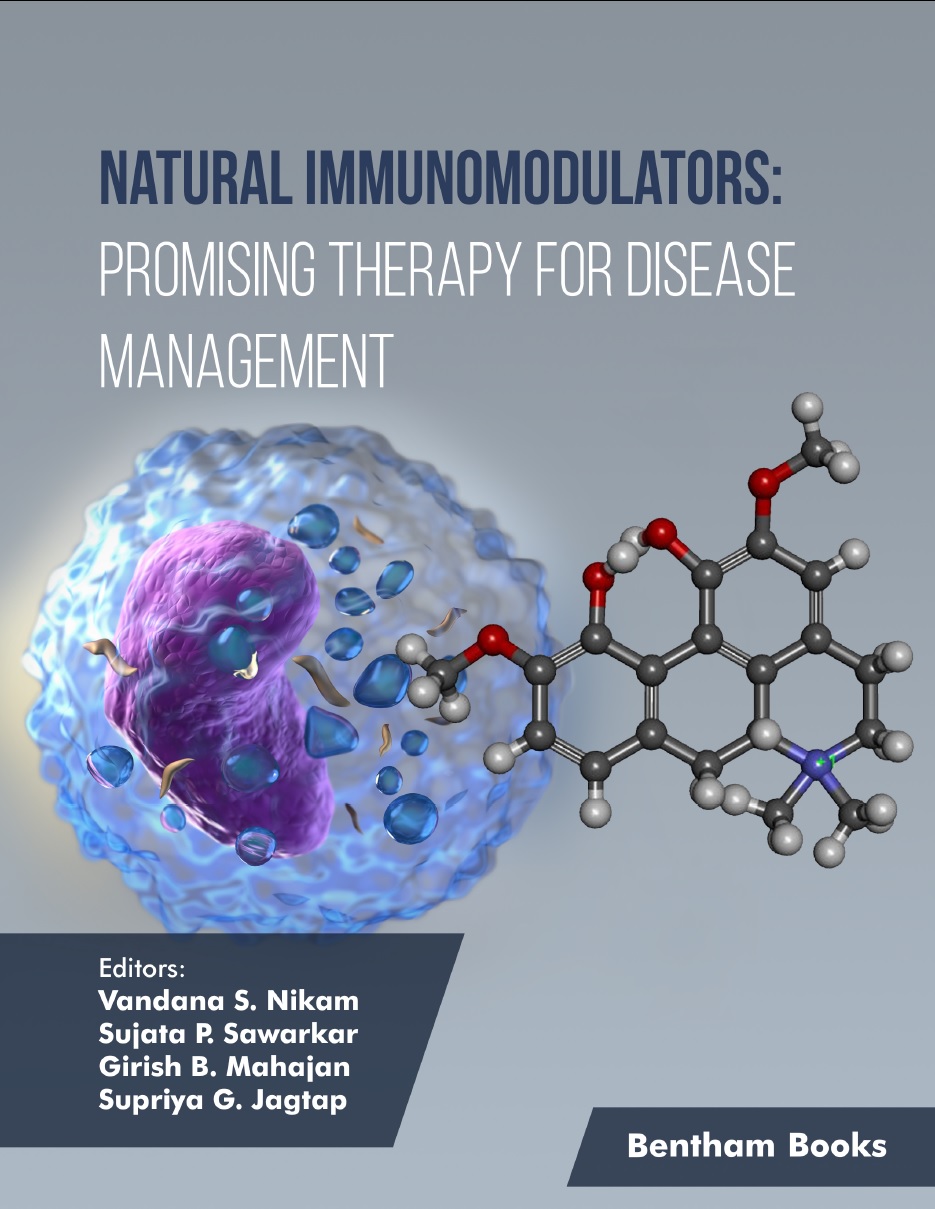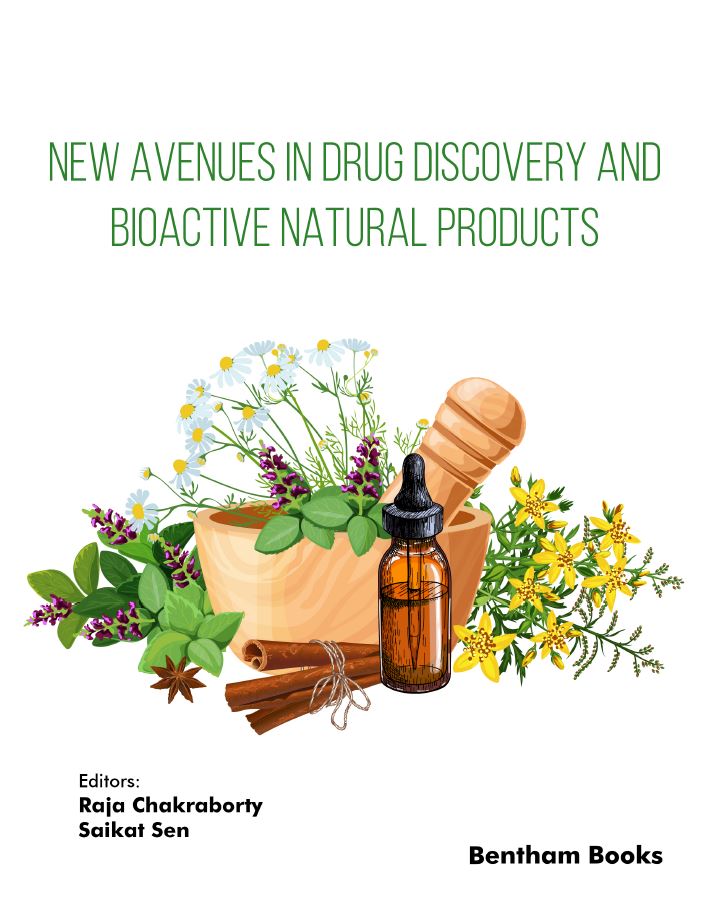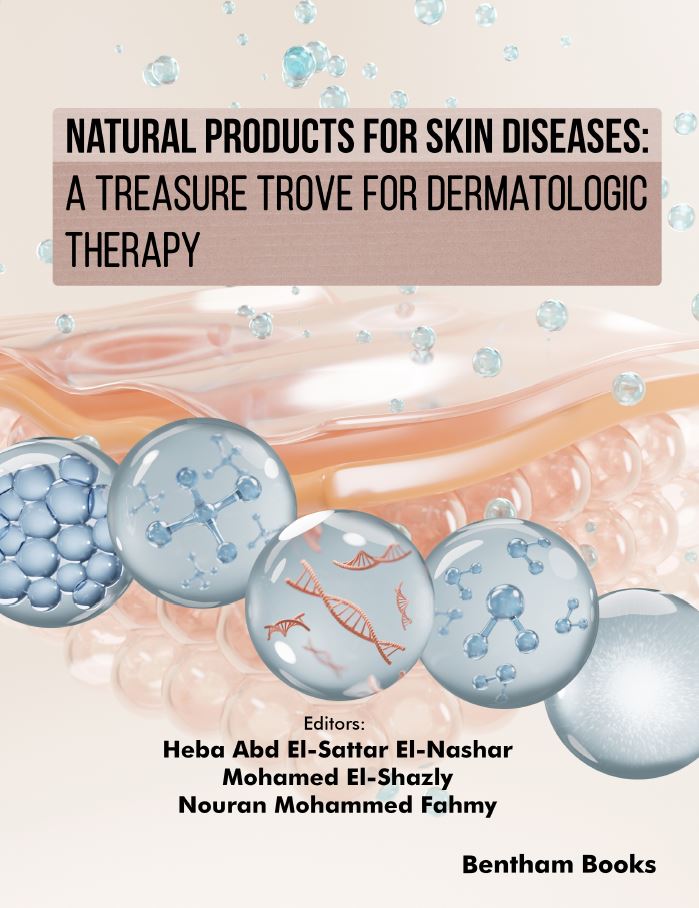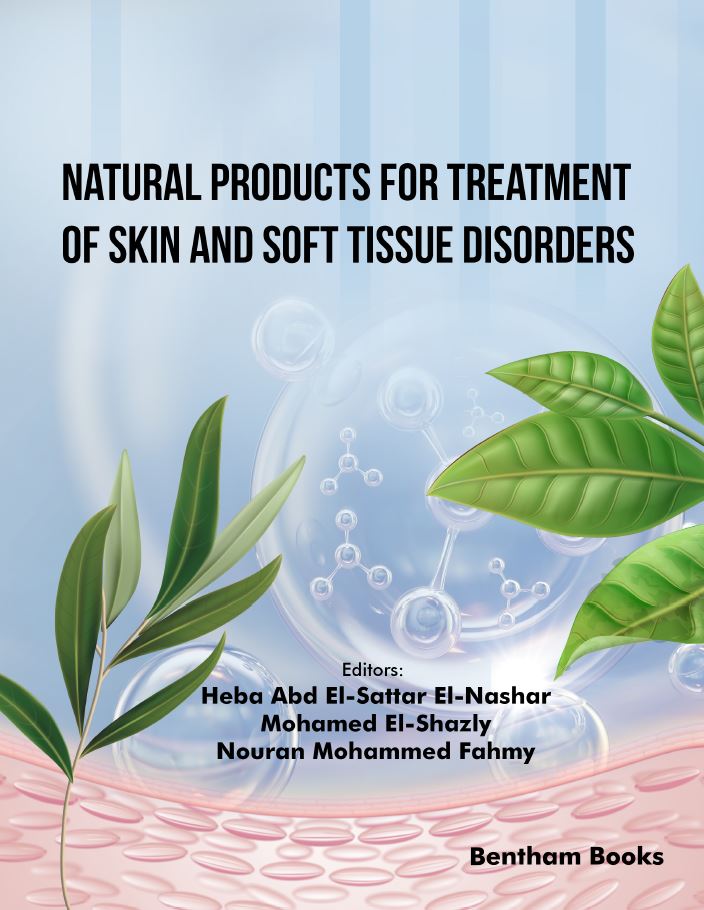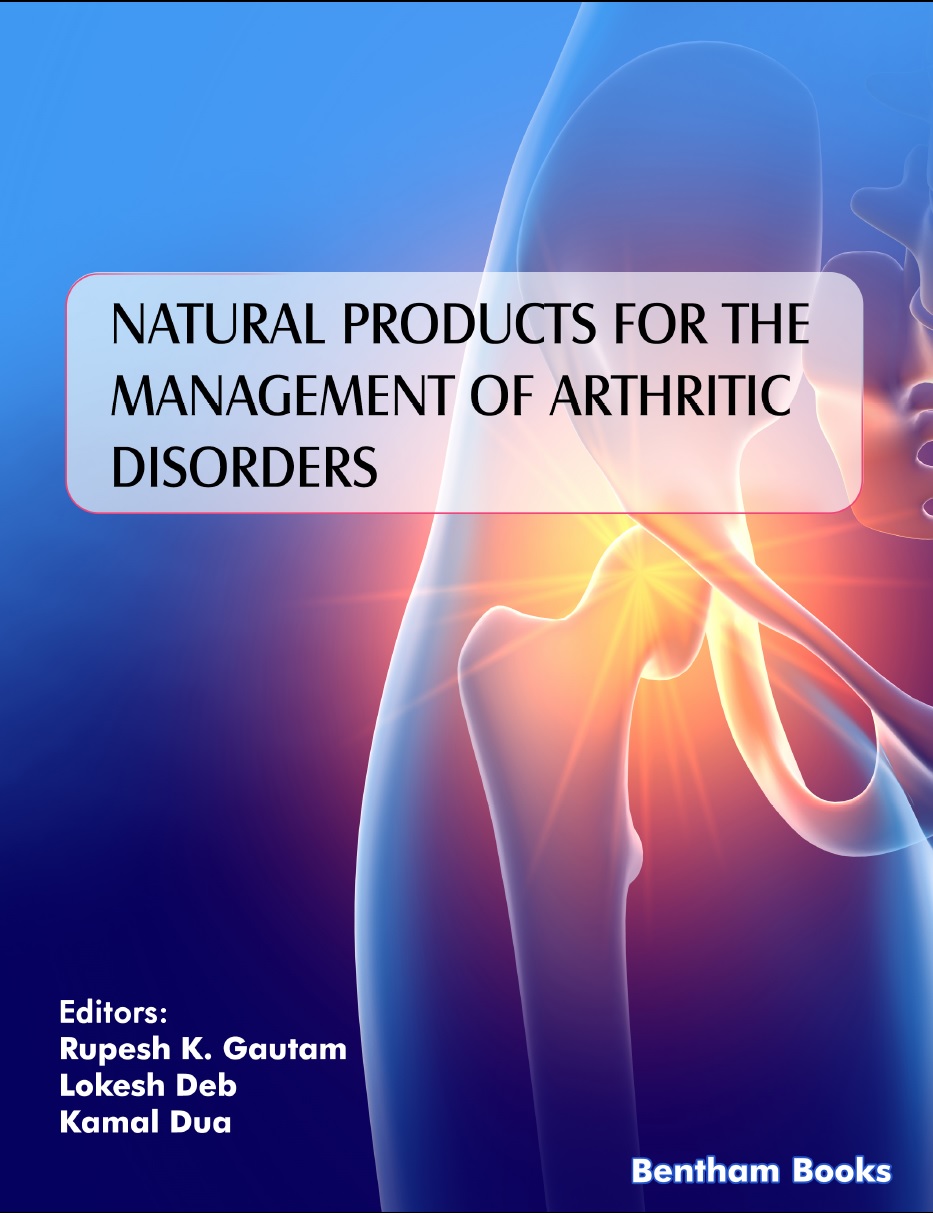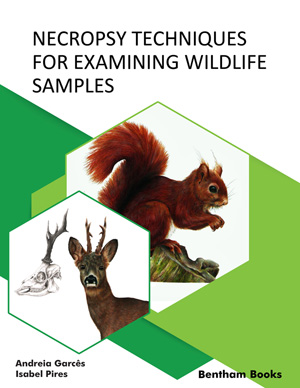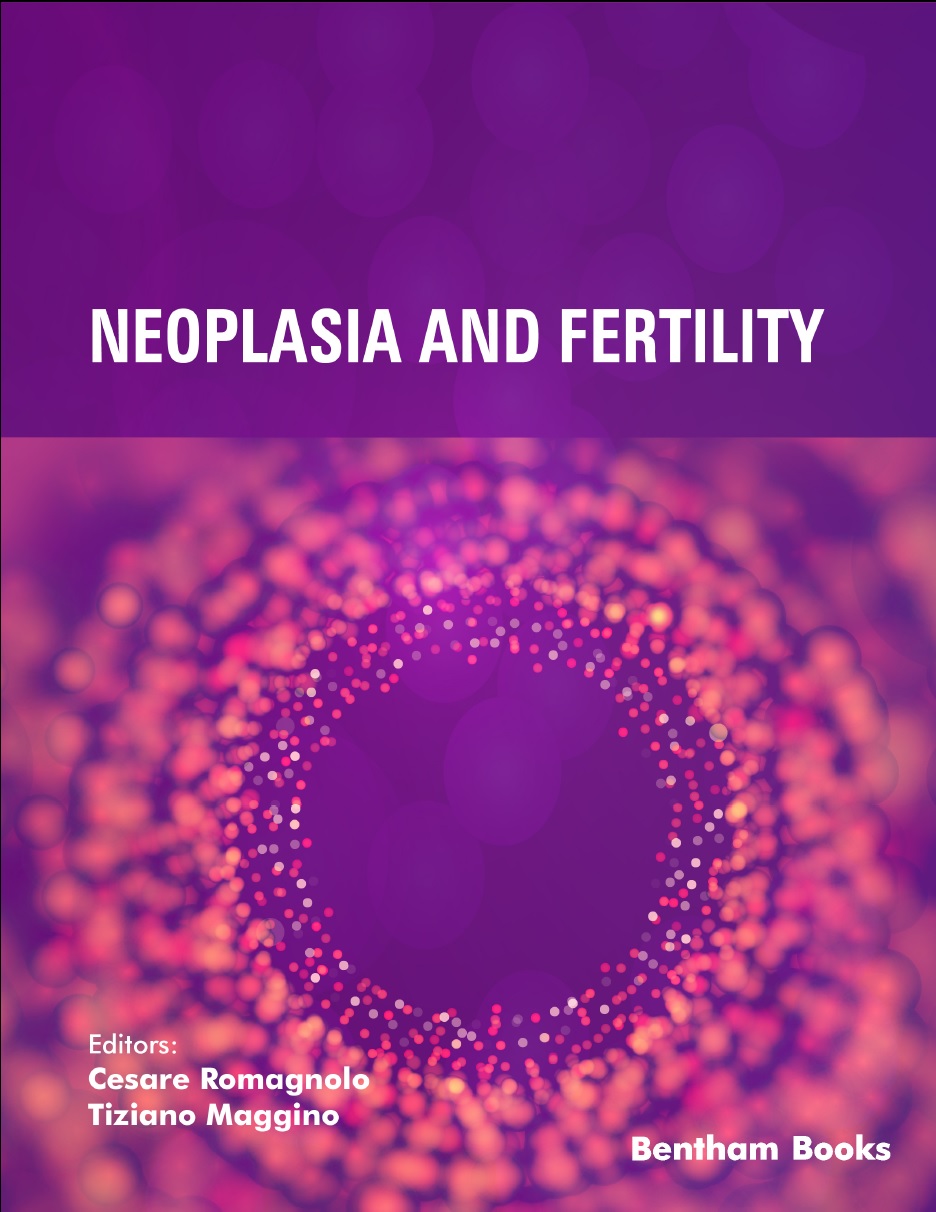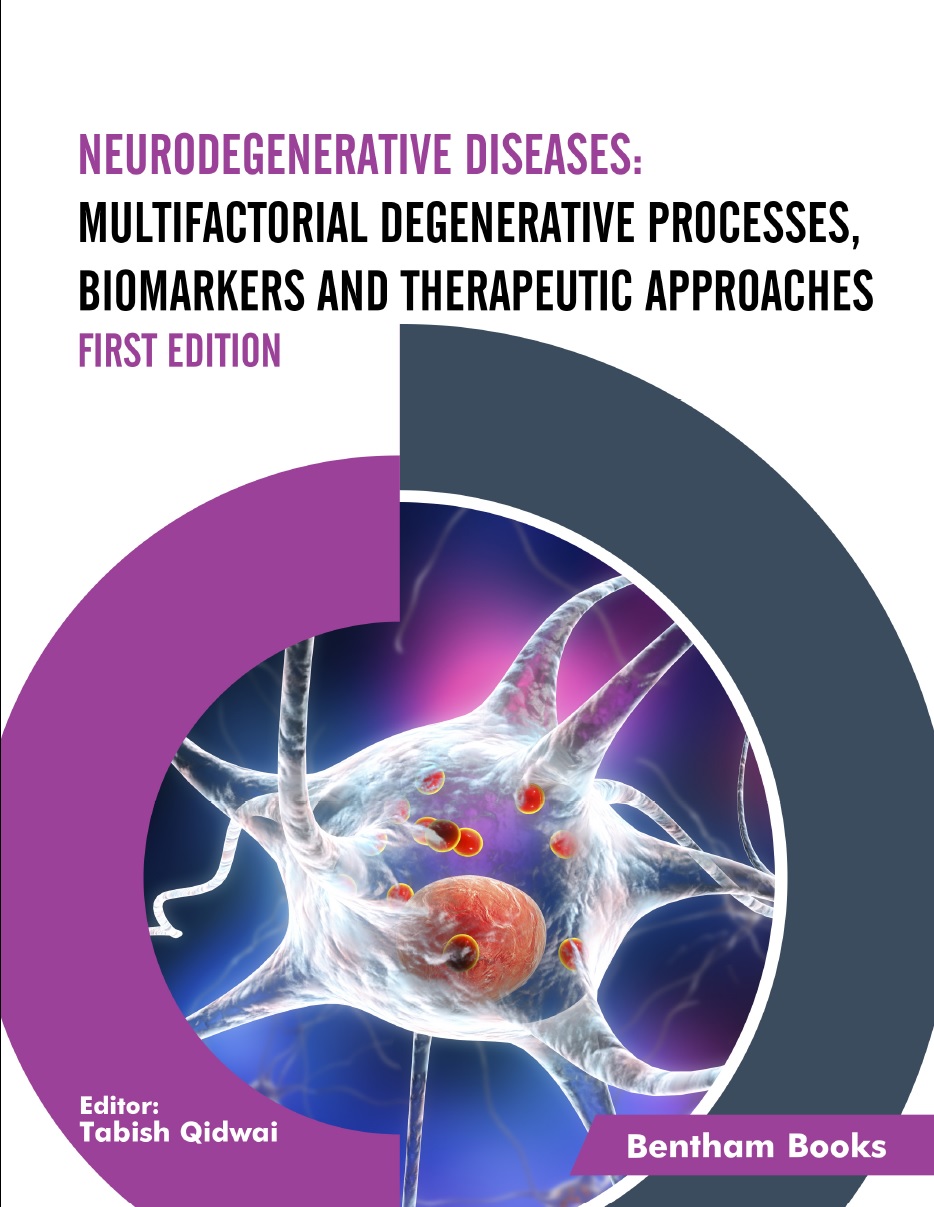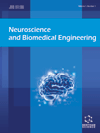- Home
- Publishers
- Bentham Science Publishers
Bentham Science Publishers
Bentham Science Publishers is a major publisher of more than 100 peer-reviewed science, technology and medical (STM) journals, along with a rapidly growing collection of eBooks. Since 1993, Bentham Science Publishers has been catering to the information needs of the pharmaceutical, engineering, biomedical and medical research community.581 - 600 of 839 results
-
-
Nanotechnology Driven Herbal Medicine for Burns: From Concept to Application
More LessBurns can cause life-threatening injury and the lengthy hospitalization and rehabilitations required in burn therapy lead to higher healthcare costs. The risk of infection has also been one of the important concerns of burn wound management. The purpose of the burn wound care management is speedy wound healing and epithelization to limit the infection. The topical application of therapeutic agents is quintessential for the longevity of patients having significant burns.
In recent times, research on herbal medicine for burn wound management has been vastly increased because of their safer toxicological profiles in contrast to synthetic medicines. Despite the promising therapeutic potential of herbal medicines in this area, herbal medications have some limitations which include low pharmacological activity, solubility and stability. Nanotechnology-based smart drug delivery approaches which involve the use of small molecules as nanocarriers, however, can help to overcome these biopharmaceutical challenges.
This book provides an overview of plant-mediated metallic nanoparticulate systems and nanophytomedicine based therapeutic treatment modalities for burn wound lesions. Nine chapters deliver updated information about nanomedicines for burn wound therapy. Contributions are written by experts in nanomedicine and phytomedicine and collectively cover the pathophysiology of wound lesions, current and future outlook of nanomedicine based treatments for burn wound lesions, the role of biocompatible nanomaterials in burn wound management, plant-mediated synthesis of metal nanoparticles for treating burn wound sepsis, phytomedicine based nanoformulations and the phyto-informatics models involved in the wound healing process which are used to select appropriate nanotherapeutic agents.
This reference serves as an accessible source of information on the topic of nanomedicine for burn treatments for all healthcare professionals (medical doctors, nurses, students trainees) and researchers in allied fields (pharmacology, phytomedicine) who are interested in this area of medicine.
-
-
-
Nanotechnology in Drug Discovery
More LessThis book provides a compressive overview of nanotechnology in modern drug discovery for students and researchers. The book starts with the fundamentals of nanotechnology followed by nanomaterials in pharmaceutical drug design, drug delivery applications, regulatory aspects, formulation and nanoparticle biotransformation. It provides a step by step guide through the drug development process while conveying information about the benefits of nanomaterials for therapy. The book concludes with perspective on the future of nanotechnology-based drug discovery, summarizing current knowledge on nanotherapeutics and translational medicine.
Key Features
- Explains the fundamentals of nanotechnology in drug discovery
- Includes up-to-date information on modern nanopharmaceutical manufacturing, nanomaterials, and nanoparticle-based drug therapy
- Practice questions for learners and a list of references for advanced readers for each chapter
-
-
-
Nanotechnology: A Quick Guide to Materials and Technologies
More LessNanotechnology: A Quick Guide to Materials and Technologies invites readers to explore the cutting-edge world of nanotechnology, offering a comprehensive yet accessible introduction to this rapidly evolving field. The content provides a foundation for understanding the field and details the properties of significant nanomaterials. Readers will also gain insights into innovative processes while receiving a balanced perspective on the social and regulatory aspects of nanotechnology.
Key Features:
Foundational Knowledge: Begins with an overview of nanotechnology, its history, and its key concepts,
Diverse Nanomaterials: Explores various types of nanomaterials, including nanoparticles, nanowires, and carbon-based materials like graphene, detailing their properties and potential applications.
Advanced Applications: Explores the real-world uses of nanotechnology across multiple sectors, such as medicine, electronics, energy, and environmental science, demonstrating its transformative impact.
Fabrication and Characterization: Covers techniques for creating and analyzing nanomaterials, offering insights into the processes that drive innovation in the field.
Ethical and Societal Considerations: Discusses the broader implications of nanotechnology, including ethical, societal, and regulatory aspects
Ideal for students, educators, researchers, and industry professionals, this guide serves as an informative resource for anyone looking to deepen their understanding of nanotechnology.
-
-
-
Nanotherapeutic Strategies and New Pharmaceuticals (Part 1)
More LessAdvances in technology have enabled medicinal chemists to discover and formulate several highly specific, biocompatible, and non-toxic therapeutic agents for clinical applications. Nanotechnology has achieved significant progress in the last few decades and is crucial in every field of science and technology. Nanotechnology-based pharmaceuticals offer multifaceted and alternative methodologies in comparison to the limitations of many conventional clinical therapies. Expertise in designing and developing nanoformulations has helped in targeted drug delivery. Recently, the use of innovative therapeutic agents, particularly in nanomedicine, has accounted for a significant portion of the global pharmaceutical market and is predicted to continue to grow rapidly in the near future.
Nanotherapeutic Strategies and New Pharmaceuticals is an accessible multi-part reference which informs the reader about several new techniques based on nanotechnology. The chapters explain relevant topics in detail. The book is designed to encourage and help undergraduate, graduate and post-graduate students in the field of nanotherapeutics, pharmaceuticals and bio-organic chemistry through the use of didactic language and simple illustrations.
Part 1 of this book set explains general advances in nanomedicine, followed by chapters covering the role of nanotherapeutics in hematology and cancer treatment, as well as specific types of nanomaterials based on different components (such as boron, graphene, silver and other metals). The book also features a chapter that summarizes the processes for designing nanoparticles tailored for specific targets. The book serves as a textbook for students in pharmacology and medical biochemistry, as well as a quick reference for researchers on bio-organic chemistry, as well as general readers interested in nanomedicine.
-
-
-
Nanotherapeutic Strategies and New Pharmaceuticals Part II
More LessAdvances in technology have enabled medicinal chemists to discover and formulate several highly specific, biocompatible, and non-toxic therapeutic agents for clinical applications. Nanotechnology has achieved significant progress in the last few decades and is crucial in every field of science and technology. Nanotechnology-based pharmaceuticals offer multifaceted and alternative methodologies in comparison to the limitations of many conventional clinical therapies. Expertise in designing and developing nanoformulations has helped in targeted drug delivery. Recently, the use of innovative therapeutic agents, particularly in nanomedicine, has accounted for a significant portion of the global pharmaceutical market and is predicted to continue to grow rapidly in the near future. Nanotherapeutic Strategies and New Pharmaceuticals is an accessible multi-part reference which informs the reader about several new techniques based on nanotechnology. The chapters explain relevant topics in detail. The book is designed to encourage and help undergraduate, graduate and post-graduate students in the field of nanotherapeutics, pharmaceuticals and bio-organic chemistry through the use of didactic language and simple illustrations. Part 2 of this book covers the potential of nanotherapeutics and natural therapies for treating neurological diseases, targeting ion channels, signal transduction therapy, gene therapy of single gene mutation diseases and for nanoformulations for special purposes such as wound healing and stimuli-responsive drug delivery. The book also features a chapter that summarizes the types of nanoparticles tailored for specific molecular targets that mediate different diseases. The book set serves as a textbook for students in pharmacology and medical biochemistry, as well as a quick reference for researchers on bio-organic chemistry, as well as general readers interested in nanomedicine.
-
-
-
Nanotherapeutics for the Treatment of Hepatocellular Carcinoma
More LessHepatocellular carcinoma (HCC) is a leading cause of death globally. Conventional chemotherapeutic agents are unable to penetrate cancerous hepatocytes completely and are toxic to non cancerous cells and tissues. This toxicity significantly compromises the therapeutic outcome of conventional chemotherapeutic agents which is also reflected in the high mortality of the disease. Nanotherapeutics have shed new light onto HCC treatment by enabling site-specific in vivo delivery of chemotherapeutics specifically to neoplastic hepatocytes without affecting normal hepatocytes. Thus, nanotherapeutics have shown considerable potential and there is tremendous impetus for rapid translation from the pre-clinical to the clinical domain to significantly prolong the survival in HCC.
In Nanotherapeutics for the Treatment of Hepatocellular Carcinoma, authoritative experts of the field have explored the important aspects of nanotherapeutics against HCC. The book exhaustively, vividly and explicitly describes the molecular pathogenesis, diagnostic aspects and nanotherapy of HCC, while also highlighting the challenges of conventional therapy and the benefits of nanotherapeutics. Chapters of the book also cover recent investigations of nanotherapeutics against HCC, types of nanomedicines, recent patents, commercially available nanotherapeutics and a future perspective to give a comprehensive review of the topic to readers. In addition to these defining features, the book provides several references for further reading. The book is an ideal resource on HCC nanotherapeutics for medical and pharmacology postgraduate students, faculties, researchers, and biomedical scientists working on HCC and nanotherapy.
-
-
-
Natural Conservative Dentistry: An Alternative Approach to Solve Restorative Problems
More LessIn nature lies the solution to restore teeth with minimal damage. In this groundbreaking book, the management of dental challenges is presented from a new perspective. Natural Conservative Dentistry: An Alternative Approach to Solve Restorative Problems provides evidence-based solutions to dental challenges to researchers, practitioners and dental service providers. The main attribute of all these solutions is that they are all derived from natural ingredients. Natural ingredients are an effective alternative for dental care and management in contrast to synthetic products that have multiple side effects.
This book fills a knowledge gap on alternative and sustainable solutions derived from nature to respond effectively to dental challenges encountered in dental treatment for the conservation of the tooth. It is a compilation of the work of expert dentists that has been carried out in clinics for the management of dental problems.
Key Features
- Provides an insightful look at the prevention of dental diseases through evidence-based interventions using natural products in 9 referenced chapters
- Contains valuable contributions in restorative dentistry, such as caries prevention, enamel and dentin remineralization, dentin biomodification, dentin desensitization, vital pulp therapy, antioxidants, and tooth bleaching
- Provides an update on the current status of different ingredients used in oral health care products developed for commercial markets
- Includes notes on pathophysiology and diagnosis on specific conditions and sources of natural ingredients
The book is a valuable reference for trainees and professionals who want to enhance their restorative dentistry practice in the clinic.
-
-
-
Natural Feed Additives Used in the Poultry Industry
More LessNatural Feed Additives Used in the Poultry Industry addresses recent information on the use of different natural feed additives in poultry nutrition. Chapters in the book focus on the growth, production, reproduction and health of poultry.
Key Features:
- 15 chapters contributed by more than 30 experts and scientists involved in animal and poultry nutrition, physiology, toxicology, pharmacology, and pathology
- Chapters highlight the significance of a variety of herbal plant extracts and derivatives, cold pressed and essential oils, fruits by-products, immunomodulators, organic acids, probiotics, nanoparticles and their role in poultry industry instead of the growth promoter antibiotics.
- Provides details about the use of antibiotic as growth promoters in poultry and the development of bacterial resistance.
- Provides a holistic approach on how natural feed additives can provide an efficient solution to animal health,
- Covers the main categories of poultry, including broiler chickens, laying hens, quails, geese, ducks, and turkey.
- References in each chapter for further reading
This handbook represents an up-to-date review of the existing knowledge on natural feed additives, both in vitro and in vivo and the basis for future research. The text is useful to students of poultry sciences, nutritionists, scientists, veterinarians, pharmacologists, poultry breeders, and animal husbandry extension workers.
-
-
-
Natural Immunomodulators: Promising Therapy for Disease Management
More LessNatural Immunomodulators: Promising Therapy for Disease Management discusses the use of natural immunomodulators as a promising therapy for managing various diseases. The book begins with an introduction to the immune system and the ways in which it can be modulated. This is followed by a discussion on the various diseases and disorders associated with the immune system, including autoimmune disorders, allergies, and immune deficiency conditions. The natural sources of immunomodulators, including plants, herbs, and other natural substances is also explained along with the importance of standardizing natural immunomodulator drugs, including the methods used to ensure their quality and consistency. The book also delves into the chemistry and analytical techniques used to study immunomodulators, clinical and pre-clinical bioassays. The next couple of chapters focus on the use of natural immunomodulators in cancer, the therapy of cancer and infectious diseases. Drug delivery and the strategy and regulatory perspective for natural immunomodulators. The final 2 chapters round up the contents with information about synthetic immunomodulators and the future perspective for the use of immunomodulators in disease management. Natural Immunomodulators: Promising Therapy for Disease Management is a comprehensive guide to the use of natural immunomodulators as a therapy for various diseases, and is a valuable resource for professionals and students interested in this topic. The book is aimed at health care professionals such as medical doctors, nurses, pharmacists, and life science and nutritionist professionals, as well as students.
-
-
-
Natural Medicine
New Avenues in Drug Discovery and Bioactive Natural Products
More LessNew Avenues in Drug Discovery and Bioactive Natural Products is the second volume of the Natural Medicine book series. It is devoted to current research in drug discovery from natural sources. The volume features 13 chapters that cover modern analytical and scientific approaches. The book starts with chapters on advanced analytical and research techniques, such as genomic mining, quality control of herbal drugs, DNA fingerprinting, high-throughput screening, molecular docking and extraction techniques. The contributors provide a summary of challenges for researchers and commercial applications where possible. The book also features chapters dedicated to specific medicinal agents that target a disease (glycosides, SARS-CoV2 spike protein inhibitors, and andrographolides. The collection of important research topics in natural product chemistry aims to help the scholars and researchers in the scientific community that are involved in the extraction and development of new medicines.
-
-
-
Natural Products Journal, The
More LessThe Natural Products Journal a peer-reviewed journal, aims to publish all the latest and outstanding developments in natural products.
The Natural Products Journal publishes original research articles, full-length/mini-reviews, letters, and guest-edited issues on all aspects of research and development in the field, including isolation, purification, structure elucidation, synthesis, and bioactivity of chemical compounds found in nature. Articles related to recent developments in medicinally important natural products, particularly concerning the structure-activity studies regarding certain diseases, such as inflammation, cancer, tropical diseases, diabetes, cardiovascular diseases, etc., are also covered in this journal.
-
-
-
Natural Products for Skin Diseases: A Treasure Trove for Dermatologic Therapy
More LessNatural Products for Skin Diseases: A Treasure Trove for Dermatologic Therapy is an enlightening journey through the realm of natural remedies for various skin diseases. The editors have compiled information on effective and holistic treatment approaches that can be applied in clinical settings. This book brings diverse range of topics, including skin protection against harmful radiation, natural remedies for burns and wounds, management of skin pigmentation issues, and herbal treatments for scabies. It also explores the potential of natural cosmetics and their future applications, along with the use of natural products and nanoparticles in skin delivery. All chapters are contributed by experts in dermatology and herbal medicine, and are supplemented with scientific references for advanced readers. The book primarily serves as a textbook for students in medicine and dermatologists in training. It also serves as a valuable guide for dermatologists, researchers, and healthcare professionals, revealing the treasure trove of benefits that natural products offer for treating skin diseases.
-
-
-
Natural Products for Treatment of Skin and Soft Tissue Disorders
More LessNatural Products for Treatment of Skin and Soft Tissue Disorders presents a simple and straightforward exploration of the role medicinal plants play in treating a diverse range of skin-related disorders. With contributions from researchers worldwide, this book delves into the pathology of skin conditions such as eczema, superficial mycoses, acne, vitiligo, and skin ulcers, providing effective treatment protocols using natural remedies. It also addresses prevalent disorders like atopic dermatitis and skin infections in developing countries. Finally, the book sheds light on the rising concern of skin cancer and potential natural therapeutic approaches. Readers will be equipped with the knowledge to harness the power of natural medicines in their dermatology practice.
This comprehensive resource serves as a handbook for medical residents, students and dermatologists, offering invaluable insights into the potential of medicinal plants for the treatment of skin and soft tissue disorders.
-
-
-
Natural Products for the Management of Arthritic Disorders
Frontiers in Arthritis: Volume 5
More LessRheumatoid arthritis (RA) is the most common inflammatory complication and affects approximately 1 % of the global population. It affects three times more women than men. RA is an autoimmune disorder elicited by exposure of genetic factors from the host to unknown antigens causing arthritogenic complaints. It also includes the activation of lymphocytes as well as CD4+ helper T cells along with the local release of chronic inflammatory mediators and cytokines like tumor necrosis factor (TNF-α) and various cytokines like interleukins (IL) that enormously affect the joints. The available allopathic therapies for RA are not a cure for the complications, and antibody therapy and surgical procedures are expensive.
However, in the present era, researchers and healthcare professionals have moved toward natural medicines obtained from plants and other natural sources. Research-based on developments in phytomedicine has progressed steadily. Evidence has been collected to show the massive therapeutic potential of medicinal plants used in various traditional systems against many pathological complications. Researchers have focused on the therapeutic potential of natural products used for treatment and counteracting various disorders along with their complications having negligible adverse effects.
Natural Products for the Management of Arthritic Disorders compiles current knowledge about the bioactive compounds and herbal formulations useful in the treatment of rheumatoid arthritis. 11 chapters explain the role of natural products in the management of rheumatoid arthritis. Topics have been contributed by experts in medicinal chemistry and rheumatology.
The book first introduces the reader to rheumatoid arthritis before delving into conventional and alternative therapies for the disease. The editors have also included special topics such as the biomarkers for RA, cytokines and anti-inflammatory mediators, and preclinical and clinical studies. The range of topics should provide a comprehensive overview of natural remedies for arthritis and the role of natural products in anti-arthritic drug development.
The information will be useful for many readers including medical and pharmacology students, multidisciplinary research scholars, scientists, pharma/herbal/food industrialists, and policy makers.
-
-
-
Navigating through Technology in Modern Education
More LessNavigating through Technology in Modern Education explores the transformative impact of digital innovation in education. From introducing digital transformation to discussing the benefits and challenges, this book covers crucial topics like e-learning, artificial intelligence, big data, and the Internet of Things in education. With insights into factors for adopting technology and tailored learning experiences, this book equips readers with the knowledge to navigate the evolving landscape of modern education. Whether you're a seasoned educator or a newcomer, this book offers valuable insights into leveraging technology for enhanced learning experiences.
-
-
-
Necropsy Techniques for Examining Wildlife Samples
More LessIn this handbook, the authors provide a practical, easily accessible guide of necropsy techniques for examining wildlife. Chapters introduce the reader to the value of necropsy in studying wildlife in general, sample collection methods, cadaveric phenomena and necropsy techniques for a variety of organisms ranging from invertebrates to mammals. The book addresses some of the peculiar characteristics of veterinary autopsy specific to different types of specimens. The goal of this book is to equip the reader with the information necessary to conduct a forensic examination in order to reach a conclusive diagnosis of an animals death, while also understanding it in an ecological context.
Necropsy Techniques for Examining Wildlife Samples is intended as an essential handbook for students and professionals of biology, zoology and veterinary medicine as well as professionals, who work in natural parks, wildlife rehabilitation centers and biological or zoological parks as conservationists, researchers or animal handlers.
-
-
-
Neoplasia and Fertility
More LessResearch on young individuals and childbearing adults being treated for neoplasia has revealed a rising number of requests for treatments aimed to maintain the possibility to conceive. To answer such requests, it is important for medical professionals to consider the necessity to cure the woman, to preserve her fertility, to give information both on the effect of neoplasia and treatments on pregnancy. Patients have to be informed on the possible treatment alternatives that are less aggressive towards the reproductive function, but at the same time, give desirable results in terms of survival.
Neoplasia and Fertility describes the state-of-the-art on fertility preservation in women affected by neoplasia. The 11 book chapters inform the reader with the goal of equipping them with the required information needed to present the condition and to discuss the possibility of conceiving, and how to manage patients after oncologic treatments at different stages of pregnancy.
Key Features
- Informs the reader about the relationship between gynecological cancer and fertility in women through 11 chapters
- Describes a broad range of cancers and relevant treatment options for maintaining fertility
- Explains the role of a 'Fertility Sparing Team' in clinics
- Familiarizes the reader with the ethics behind oncology treatments with reference to female fertility
- Describes fertility issues related to hereditary cancers in women
- Includes references for further reading
The book serves as an informative reference on the subject to medical doctors in the gynecology, obstetrics and midwife specialties, and nurses training the gynecological oncology. It will also be of interest to healthcare administrators involved in fertility and oncology clinics, as well as general practitioners in family medicine.
-
-
-
Neurodegenerative Diseases: Multifactorial Degenerative Processes, Biomarkers and Therapeutic Approaches
More LessThis reference is the definitive guide to common neurodegenerative diseases that affect humans. The book covers mechanisms of some of the most well-known neurodegenerative diseases, their biomarkers, neuropharmacology, and emerging treatment strategies.
The book introduces the subject of neurodegeneration by outlining the biochemistry, pathophysiology and multifactorial neurological mechanisms (the role of genetics, environmental factors and mitochondrial damage, for example). Next, it explains some of the most studied diseases, namely, Parkinson's Disease, Alzheimer's Disease, Huntington's Disease, and Multiple Sclerosis. Subsequent chapters delve into current knowledge about diagnostic and immunological biomarkers, followed by a summary of novel therapeutic strategies.
Special attention has been given to the role of medicinal plants in attempting to treat neurodegenerative diseases, as well as the public health burden posed by these conditions.
Key Features - give readers an overview of multifactorial disease mechanisms in neurodegeneration
- covers some major neurodegenerative diseases in detail
- covers diagnostic and immunological biomarkers
- explores current therapeutic strategies and drug targets in common neurodegenerative diseases
- offers a simple presentation with references for advanced readers
The book is a suitable reference for all readers, including students, research scholars, and physicians who are interested in the mechanisms and treatment of neurodegenerative diseases.
-
-
-
Neuroscience and Biomedical Engineering (Discontinued)
More LessNBE is the official journal of the Institute of Complex Medical Engineering (ICME). The journal promotes the best interdisciplinary research in neuroscience and biomedical engineering. NBE welcomes contributions in any domain of neural and biomedical engineering ranging in content from practical/clinical applications through experimental science, technological developments to quantitative and/or statistical methodology discussions. NBE publishes the following article types: original articles, research reviews, and book reviews.
The goal of this journal is to establish a new forum for this interdisciplinary field so neuroscientists and biomedical engineers can publish their research works in one periodical. NBE is devoted to bridge the gap between Neuroscience and Biomedical Engineering , and to foster the mutual understanding in both fields.
Typical topics include, but certainly are not limited, to the following:
Neural Technology and Neural Rehabilitation
Neurology and Signal Processing
Biomedical Informatics
Biomechanics and Neural Control
Theoretical and Computational Neuroscience
Imaging NeuroscienceKey Features:
- Original research papers and special issues for topics
- Basic neurosciences, and biomedical engineering technologies
- Existing and potential clinical applications
- Periodic ‘Review Papers’ from world-recognized experts
- International scope
- No page charges
- Rapid publication times
- Free color in electronic version
-
-
-
New Age Cyber Threat Mitigation for Cloud Computing Networks
More LessIncreasingly global and online social interactions and financial transactions involve digital data, computing devices and the internet. With cloud computing, remote computing, enterprise mobility and e-commerce on the rise, network security has become a priority. Selecting an appropriate algorithm and policy is a challenge for computer security engineers, as new technologies provide malicious users with opportunities to intrude into computer networks.
New Age Cyber Threat Mitigation for Cloud Computing Networks provides cloud and network engineers answers to cybersecurity challenges. It highlights new options, methodologies and feasible solutions that can be implemented in cloud architecture and IT Infrastructure, thereby securing end users. Chapters cover many topics related to cyber threats in the modern era.
These topics include:
Ransomware and DDoS attacks
Security algorithms
Design and implementation solutions for resilient and fault-tolerant cloud and network services
Security policy
End user data security The book is an essential resource for anyone involved in cloud computing and network security, including learners, professionals and enthusiasts.
-

